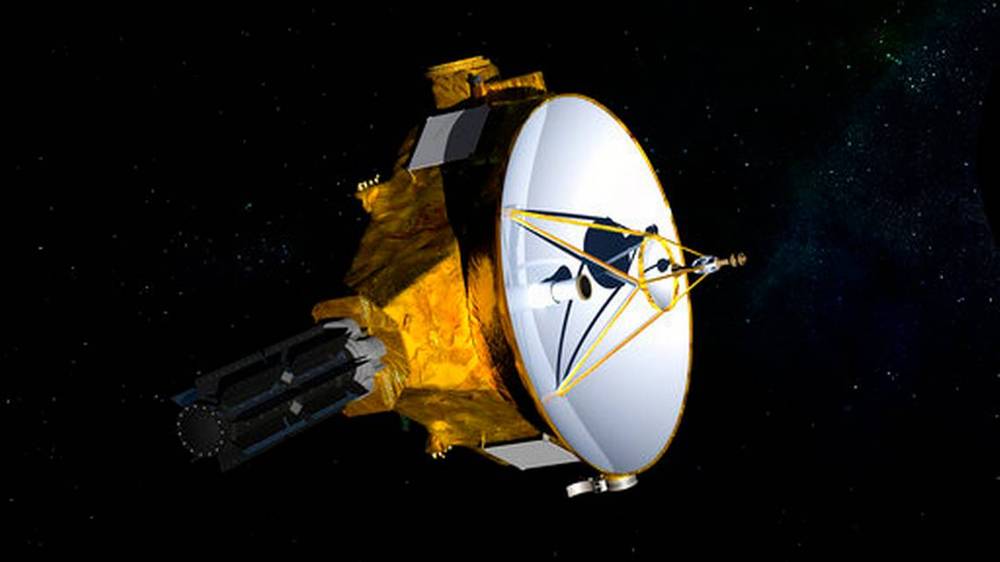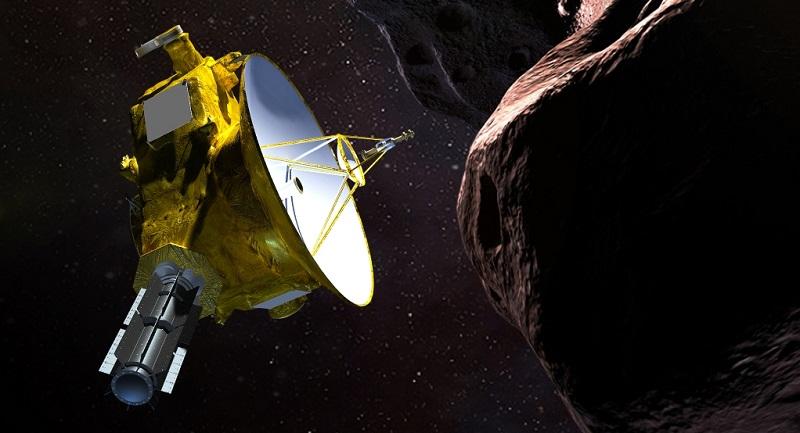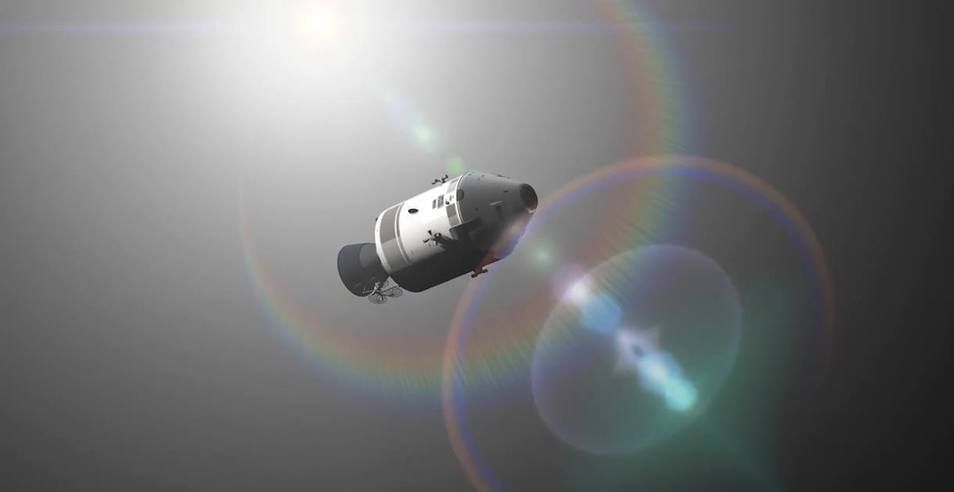Fifty years after Neil Armstrong, robots from China, India, Israel, NASA and elsewhere are heading back this year.
- by
-
Eric Mack

Fifty years after Neil Armstrong, robots from China, India, Israel, NASA and elsewhere are heading back this year.
Eric Mack

William Falconer-Beach has rendered some images of the SpaceX Starship with a mirror polished stainless steel body.
Elon Musk has reported that SpaceX is building the body of the Starship out of stainless steel and that it will be polished to a mirror finish.
A hopper version of the Starship should have its first test flights by April 2019. The Super Heavy should reach orbit in 2020.

The Latest on NASA’s New Horizons’ New Year rendezvous (all times local):
12:33 a.m.
A NASA spacecraft opens the new year at the most distant world ever explored, a billion miles beyond Pluto.

This is the highest-resolution color departure shot of Pluto’s receding crescent from NASA’s New Horizons spacecraft, taken when the spacecraft was 120,000 miles (200,000 kilometers) away from Pluto. Shown in approximate true color, the picture was constructed from a mosaic of six black-and-white images from the Long Range Reconnaissance Imager (LORRI), with color added from a lower resolution Ralph/Multispectral Visible Imaging Camera (MVIC) color image, all acquired between 15:20 and 15:45 UT — about 3.5 hours after closest approach to Pluto — on July 14, 2015. The resolution of the LORRI images is about 0.6 miles (1 kilometer) per pixel; the sun illuminates the scene from the other side of Pluto and somewhat toward the top of this image.
The image is dominated by spectacular layers of blue haze in Pluto’s atmosphere. Scientists believe the haze is a photochemical smog resulting from the action of sunlight on methane and other molecules in Pluto’s atmosphere, producing a complex mixture of hydrocarbons such as acetylene and ethylene. These hydrocarbons accumulate into small haze particles, a fraction of a micrometer in size, which preferentially scatter blue sunlight — the same process that can make haze appear bluish on Earth.
As they settle down through the atmosphere, the haze particles form numerous intricate, horizontal layers, some extending for hundreds of miles around large portions of the limb of Pluto. The haze layers extend to altitudes of over 120 miles (200 kilometers). Pluto’s circumference is 4,667 miles (7,466 kilometers).

Despite government shutdown?
A NASA spaceship is zooming toward the farthest, and quite possibly the oldest, cosmic body ever photographed by humankind, a tiny, distant world called Ultima Thule some 6.4 billion kilometers away. Current latest trending Philippine headlines on science, technology breakthroughs, hardware devices, geeks, gaming, web/desktop applications, mobile apps, social media buzz and gadget reviews.

Tidying up our extraplanetary mess is as important a task as cleaning up the Earth. If we don’t, it will become increasingly hard to launch rockets into space.

In 1961, Nancy Grace Roman was already the first Chief of Astronomy in NASA’s Office of Space Science. She developed that program in a time before the second wave of the Women’s Movement in the United States began, when banks often refused women credit in their own names and there was still an active medical debate about whether women could ever physically endure spaceflight someday. But Roman opened the skies to humanity in new ways without ever leaving the ground.
She earned her Ph.D. in astronomy at the University of Chicago in 1949 and worked at the Yerkes Observatory there for six years afterward. She joined the radio astronomy group at the Naval Research Laboratory, becoming the head of the microwave spectroscopy section. As she recalled in 1980 in an oral history interview with National Air and Space Museum curator David DeVorkin, when she heard that NASA might set up a space astronomy program, she wanted to lead it: “The idea of coming in with an absolutely clean slate to set up a program that I thought was likely to influence astronomy for 50 years was just a challenge that I couldn’t turn down. That’s all there is to it.” She joined NASA in 1959, just after the agency’s founding.
Roman opened the skies to humanity in new ways without ever leaving the ground.


SpaceX continues making news in 2018. The company first broke its own record from 2017 when it passed 18 launches in year. On Sunday, from Cape Canaveral, Florida, SpaceX launched another record-setting rocket… this one for U.S. national security. Arash Arabasadi reports.

Seasons Greetings to “all of you on the good Earth”
50 years ago today in 1968, the first crewed mission to the moon, Apollo 8, entered lunar orbit on Christmas Eve. Celebrate the #Apollo50 anniversary with us: https://go.nasa.gov/2EBJnqq